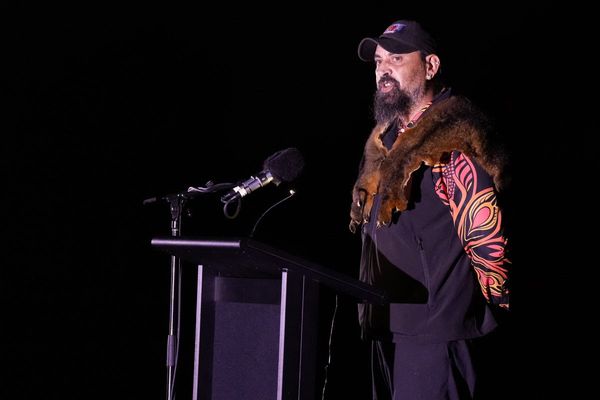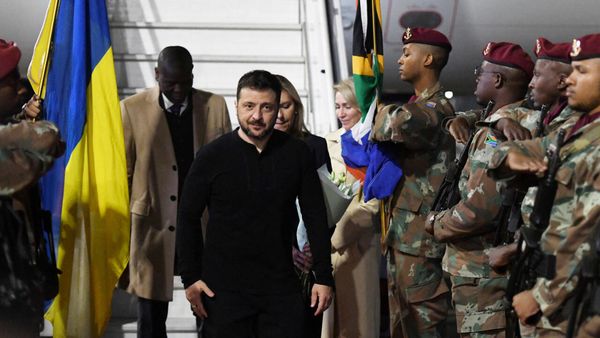
What luck for the king, with the coronation done and years of featureless ruling ahead, that Ethiopia should be offering him another chance to shine. The descendants of an Ethiopian prince, Alemayehu, who was removed to Britain and died there aged 18, have renewed their request that his remains be returned home. He was buried at Windsor’s St George’s chapel in 1879.
That Elizabeth II previously refused is all the more reason for Charles to seize this chance to signal, as with his Koh-i-noor diplomacy, duke-rationing and music choices, that his is a modern and listening palace: look at its virtuous public recoil from hurtful behaviour by a senior lady-in-waiting, Lady Susan Hussey, and assurance that “all members of the Household are being reminded of the diversity and inclusivity policies which they are required to uphold at all times”.
His revision of his mother’s decision would add a progressive flourish to an act requiring nothing more of the palace than is, when not actively mandated by the Geneva conventions, common decency. There could even be room for some tasteful restitution ritual, possibly involving uniforms, where Charles’s default expression of bemused gloom would be utterly appropriate. William and Kate, too, could do their mournful faces and fancy dress, welcoming this opportunity to show that animals and dancing are not the only thing royals love about Africa. Andrew’s absence might be approvingly noted.
For a service template, how about something like the memorial ceremony in 2013, when the Serbian royal family was allowed – Queen Elizabeth having authorised the exhumation – to repatriate Queen Maria of Yugoslavia from Frogmore?
Given the keen interest shown by British royals in the symbolism and placement of their relations’ bodies, sympathy for the Ethiopian request is natural.
What might not signify in high-turnover municipal cemeteries must instantly register with a family who recently moved the remains of Princess Margaret and Prince Philip nearer to the late queen’s, to be together. They understand what a descendant of Alemayehu’s family told the BBC: “We want his remains back as a family and as Ethiopians because that is not the country he was born in.”
Too bad: the palace wants Alemayehu kept where he was put, on Queen Victoria’s instructions. Since it can hardly say the request is over-ambitious – Philip’s mother’s body was flown from Windsor to Jerusalem 19 years after her death – its refusal, reported by the BBC, cites both practical and propriety-related objections. “It is very unlikely,” the palace says, “that it would be possible to exhume the remains without disturbing the resting place of a substantial number of others in the vicinity.” It said the chapel authorities had “the responsibility to preserve the dignity of the departed”.
Presumably it’s the palace’s intention for Ethiopian petitioners to picture, as you do from euphemisms like “others in the vicinity”, scenes of such ghastly Hadean mayhem that they will tactfully withdraw. British subjects may, on the other hand, wonder if expert accounts, with diagrams, of what would become of the late queen’s body, disguised the fact that the royal vault is actually a chaotic ossuary in which unidentifiable parts of foreign princes are so carelessly jumbled up with those of Charles’s forebears that only DNA testing could positively tell them apart (some hair of Alemayehu’s father is in fact available, courtesy of Lord Napier’s pillaging Victorians). It would certainly accord with an earlier royal excuse for inaction that “identifying the remains of young Prince Alemayehu would not be possible”.
Which would perhaps be preferable to what seems more likely: that Alemayehu’s resting place is known – why otherwise does it feature on the St George’s chapel website? – but adjustable only with what the palace considers excessive effort. And that while any temporary shifting of unshelved caskets might be a nuisance, at least for the living, it would be insignificant compared with the wholesale exhumations and transfers that are such a feature of the British royal necropolis.
Few families can have devoted as much attention as UK sovereigns to re-arranging, rehousing and relocating ancestral bodies, with some batches transferred to Frogmore, all at no recorded cost to the “dignity of the departed”, albeit that community cannot speak for itself.
In his recent biography of Alemayehu, The Prince and the Plunder, Andrew Heavens follows the palace’s excuses with the history: the prince was buried outside St George’s chapel, in catacombs, in a named coffin. Queen Victoria had taken an interest in the child since he was brought to her, aged seven, survivor of the Maqdala conflict in which British forces defeated his father, King Tewodros II.
Tewodros had imprisoned a group of Britons in revenge for having had communication with Queen Victoria blocked by officials. Following a bloody rescue operation, British troops
looted Maqdala and the orphaned Alemayehu (his mother died on the journey), was subjected to a fragmented upbringing that he spent largely, to judge by Heavens’s account and some piercing photographs, in forlorn misery.
Before his death Alemayehu had “hankered”, Heavens writes, for Ethiopia. During his lifetime his plight touched some would-be protectors, including Victoria (his Windsor burial was a respectful gesture), while one of her prime ministers, William Gladstone, condemned the removal, at the same time as the child, of Abyssinian spoils. He “deeply lamented”, Hansard recorded, “that those articles, to us insignificant, though probably to the Abyssinians sacred and imposing symbols, or at least hallowed by association, were thought fit to be brought away by a British Army.”
Though the restitution of the museum-based artefacts would be elaborate if it were legal, that doesn’t apply to Ethiopian human remains deposited in royal territory.
So why, while it has learned to contextualise the Koh-i-noor, does the palace still assert proprietorship of a child victim of conquest? Since they’re safe from a rush on prince-restitution that would leave mausoleums empty, the greater risk for the royals would seem to be in sabotaging, with this intransigence, their own claims to have changed. Unless they really have lost him?
• Catherine Bennett is an Observer columnist
Do you have an opinion on the issues raised in this article? If you would like to submit a letter of up to 250 words to be considered for publication, email it to us at observer.letters@observer.co.uk







